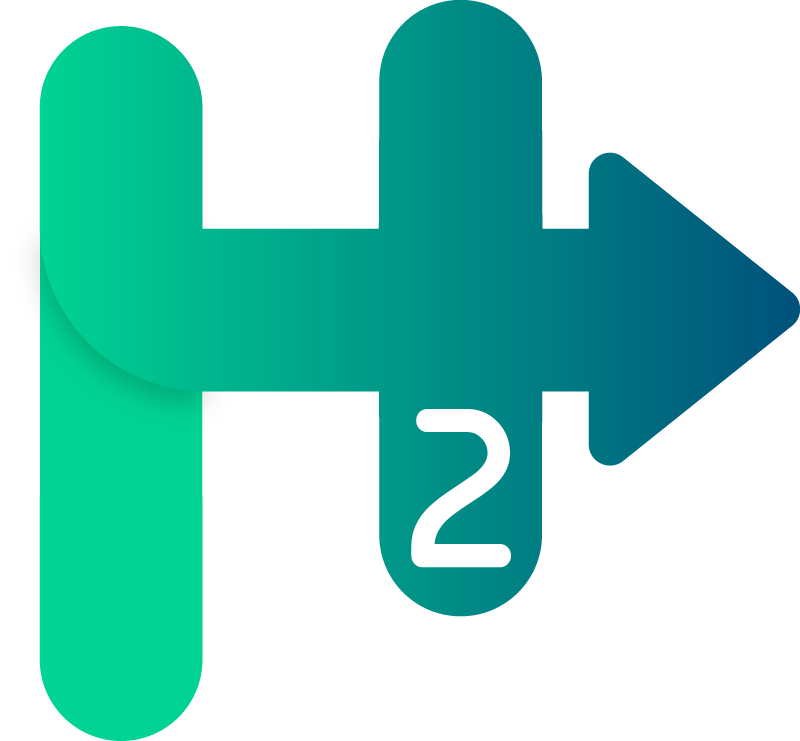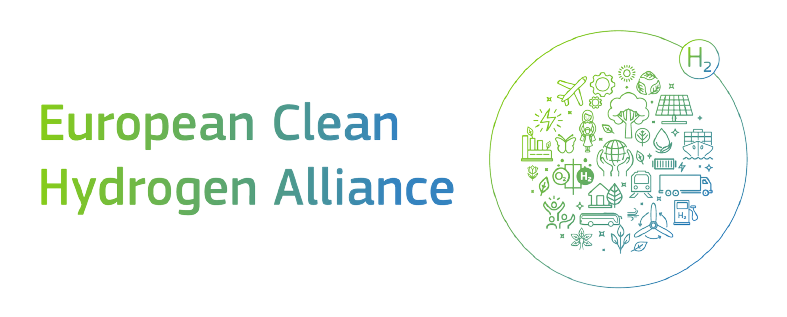Products
Inicio > Products
HYDROGEN BATTERY
Vector Series
HYDROGEN ENERGY MANAGEMENT SYSTEMS
Energy management systems based on green hydrogen production and energy supply in stationary and mobile applications.
- Outdoor/Indoor
- Plug & Play
- Scalable
- Any renewable source
- Mobility applications
- 0% CO2 emissions
- Automated and connected
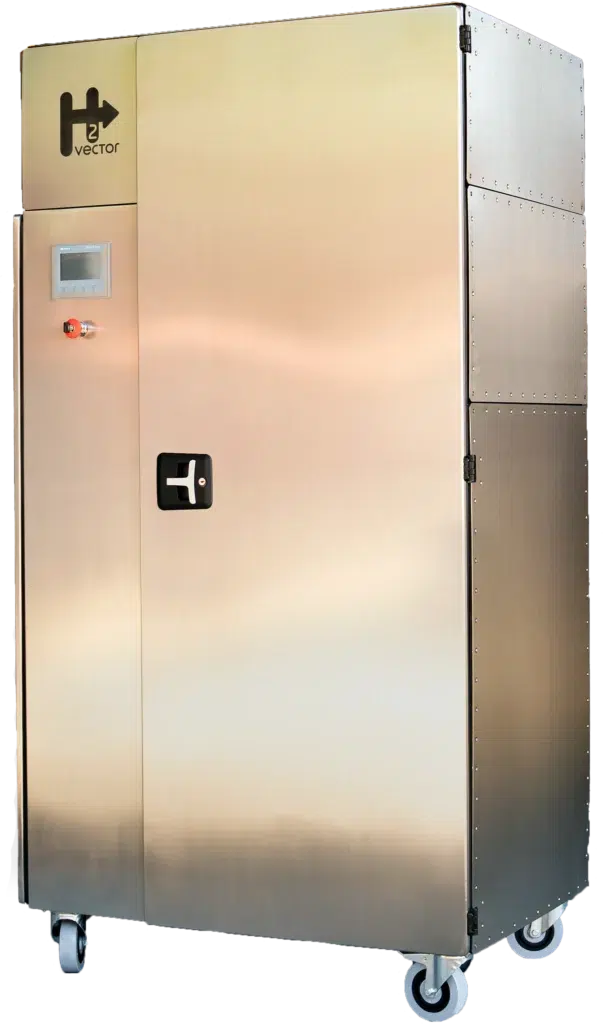
- Water treatment
- Electrolyzer
- Compression unit
- Fuel cell
- AC/DC output
- Heat supply
VECTOR SERIES
Are you looking for a greener future without giving up your energy security?
At H2Vector, we are working to make that happen. In our commitment to innovation and sustainable energy independence, we advocate for Green Hydrogen.
PET SERIES
PET
ENERGY ENABLING TECHNOLOGY
Fuel cell systems designed to provide green power in stationary and mobile applications
- Outdoor/Indoor
- Plug & Play
- Scalable
- Mobility applications
- 0% CO2 emissions
- Automated and connected
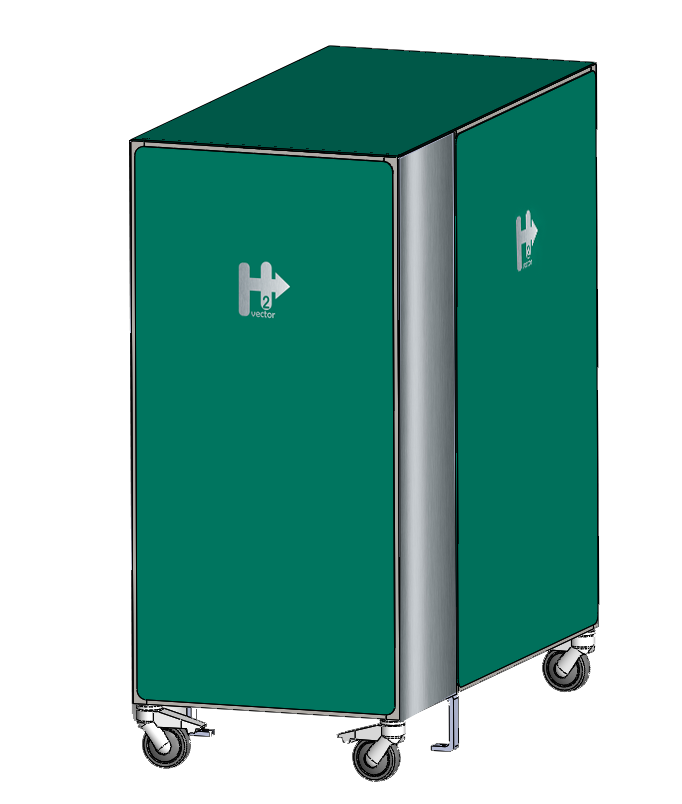
- Water treatment
- Compression unit
- Fuel cell
- AC/DC output
- Heat supply
Vector2DYNA
HYDROGEN DISPENSER
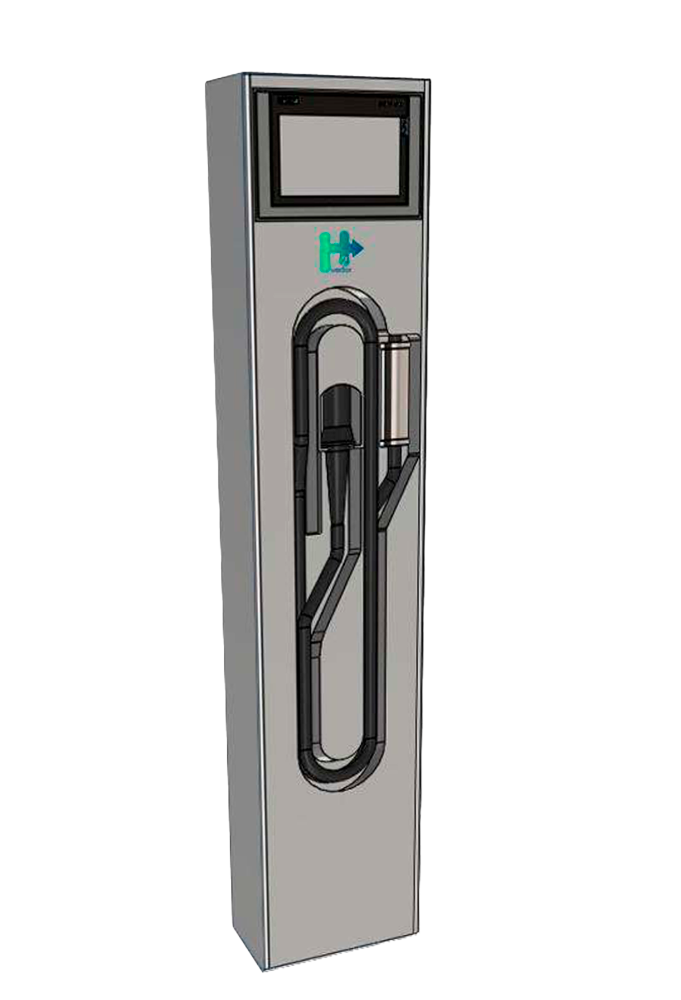
Our goal is to provide our customers access to mobility through hydrogen in any sector and field of application, always in a sustainable and affordable way.
To this end, our Hydrogen Dispenser: Vector2DYNA makes this new fuel available at different output pressure requirements, quickly and safely.
Designed to handle refueling protocols in various scenarios, Vector2DYNA guarantees the smartest and fastest response:
- SAE J2601 protocol
- SAE J2601-2 protocol
- H2Vector Protocol – Maintains SAE safety requirements and adapts to the customer’s installation.
Hydrogen Supply and Storage
Hydrogen Compression to Application-Specified Pressure
Hydrogen Supply using H2Vector Dispenser: Vector2DYNA
FCV applications
MORE INFO
Download the H2Vector 2022 Products and Services brochure
Click on the button and access more detailed information with all H2Vector products and services.
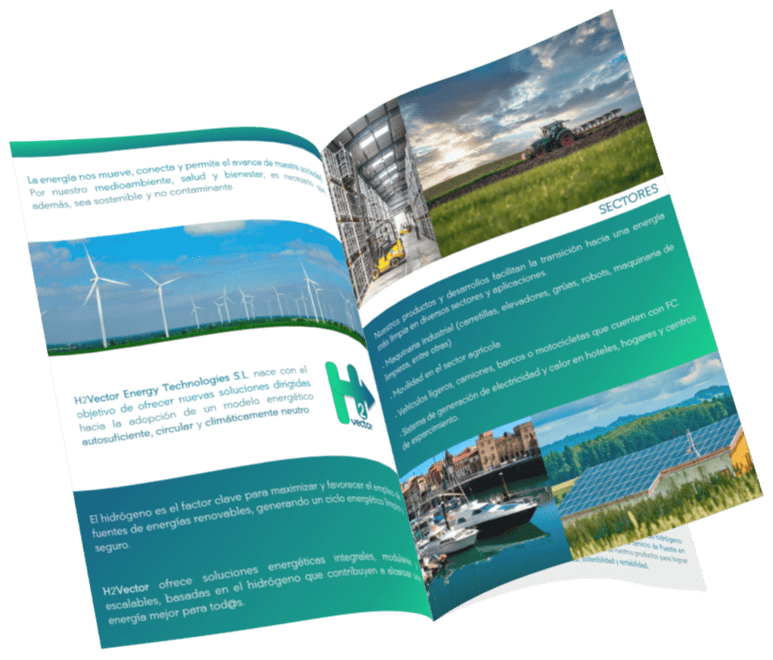
FAQ
Frequently Asked Questions
GENERAL H2 VECTOR
We are a technological start-up that aims to provide energy machines that enables the decarbonisation and electrification of society.
We believe and work towards evolving the status quo, and if you are reading this, for sure You Too. With H2Vector you will have a committed, focused, critical thinking team that is driven with the purpose of providing you the best product and system tailored at your needs. This is our commitment.
We are based in Spain’s natural paradise Asturias, from which we attend Spain and Portugal.
We are looking to expand operations along Europe, with special interest in Denmark, Sweden, Italy and France.
It varies, depending on the selected model and the primary energy source cost.
You can have a renewable system without hydrogen production, but not the other way around. Green Hydrogen needs renewables alongside to operate.
Green hydrogen systems can provide cheaper electricity than an “on the grid” options. To ensure it, a correct system dimensioning and operation must be in place.
No. At H2Vector we are continuously working to provide end-user applications to attend the necessities of different sectors as the electricity, agriculture, buildings and with a special focus in mobility. Stay tuned to our RRSS for our latest developments!
No. H2Vector has established key partnerships with companies involve in manufacturing these key elements. H2Vector integrates these technologies to energy machines for several end-uses that will provide a cleaner and electrified future, allowing our clients to have the chance of energy usage in a smarter way.
Yes. Our main goal is to manufacture useful energy machines based on hydrogen technologies, but still, at this stage of the green hydrogen development, we understand that we should provide a complete project service, guiding and ensuring our customers; success via our technology.
VECTOR SERIES - POWER OUTPUT
The Vector Series includes fuel cell stacks which are electrochemical devices that transforms hydrogen and oxygen into electricity and heat.
Due to the functioning principle of fuel cells, there is always going to be a balance of electricity and heat to be produced.
Most Vector Series models paired with hydrogen storage systems as vessels, acts like batteries.
Even though fuel cells are electrochemical systems, the process is fed with hydrogen and oxygen. Hydrogen is stored and available in reservoirs at certain operational conditions. Nevertheless, oxygen is delivered from the atmosphere through a compression system. The compression system acceleration is a reactive process which takes some seconds to arrive to the appropriate air flow necessities.
Energy depends on stored hydrogen capacity, so the energy provision depends on the storage volume. Furthermore, it is necessary a minimum system working pressure to allow a proper energy provision. For existing models, the minimum operational guaranteed pressure is 20 barg.
VECTOR SERIES - DESIGN AND CERTIFICATIONS
H2Vector is currently working towards the CE stamp. Follow us in RRSS to be inform about all the news.
The Vector Series is a modularized equipment, allowing an easy customization to the client necessities.
Nowadays, Vector Series has a global efficiency of around 26% electrical efficiency + 26% thermal efficiency. However, these efficiencies are continuously increasing due to the high investment in the electrolyser technologies.
The fuel cell module global efficiency is above 90%, being a deeply developed technology.
Outdoor storage capacity can potentially be determinate as unlimited (only limited by space availability).
Indoor storage capacity is more restrictive. In Spain, the storage limitation for indoor storage is 15kg, considering special safety measurements.
H2Vector can guide and support customers on the specific requirements.
VECTOR SERIES - INSTALLATION AND INTEGRATION
The Vectors system do not need to be connected to the grid. Several Vector Series models featuring AC output are capable to generate and provide the 3 phased sinusoidal wave to the system, necessary for the off-grid application to work.
The Vectors Series is designed to be fed by renewable energy in order to produce green hydrogen. Aiming to handle instantaneous load variations it is recommended to include a small battery system with an inverter.
On the electrical power output, low instantaneous load variations can be handled by the fuel cell system. On the hydrogen production, the electrolyser is capable to handle dynamic power inputs.
The Vectors Series is a fully automated system that monitor process parameters ensuring the correct behaviour of the system.
The Vector Series can provide interesting data such as:
– Hydrogen flow production.
– Electrolyser consumption.
– Power Output.
– Storage capacity.
At H2Vector we have developed the Hydrogen based Energy Management System (HEMS) application on which you can monitor online all parameters and be fully aware of the performance of your system.
No, the Vector Series is meant to allow a smart energy management. Only one process can run at the time, ensuring maximum efficiency.
The footprint of the smallest Vector (Vector 10) is 1000 mm x 670 mm, with a height of 500 mm. The maintenance required footprint is normally 1700 mm x 1500 mm.
For the hydrogen storage, and additional area is required, that will depends on the storage capacity.
After its installation, the equipment is controlled with 2 simple 24 volts signals.
One signal starts the hydrogen production process and the other starts the energy delivery process. These signals can come from any source type, typically any PV inverter can provide it without the necessity of any other device.
The Vectors Series can communicate via Wi-Fi, mobile data and Ethernet.
It is not necessary, but it is recommended to have a communicated system, on which the exchanged information will provide useful insight of the system’s behaviour and tendencies.
With our Hydrogen based Energy Management System (HEMS) you have a tool to check your system behaviour and monitor working parameters.
The Vector Series has been designed to minimize the installation period. The normal interconnection could be handled in 4 hours by a team of 3 people.
Most of the terminal points can be done by any qualified electrician and mechanical fitter. The hydrogen gas line connection to the storage system and the vents must be installed in accordance to H2Vector guidance, to ensure no release to unprepared atmospheres.
OPERATION AND MAINTENANCE
One of the Vector Series highlights is that no operators are required. The equipment operates automatically based on the systems necessities. We do provide maintenance, which is included for 2 years, alongside the warranty. After this period, maintenance can be purchased on yearly bases.
PRODUCTION WITH OUR HYDROGEN BATTERY OR WITH ELECTRIC BATTERIES
Depend on how the hydrogen it is generated. There are several types of hydrogen (classified by colours, from grey the most pollutant to green the lower emissions option, having some intermediate options like blue hydrogen) that depends on the way the hydrogen is generated.
The grey hydrogen is produced using fossil fuels such as natural gas.
Green hydrogen is produced by using renewable energy to power the electrolysis of water.
At H2Vector we develop products and machines considering only Green hydrogen, being the most reliable solution to build.
Which are the main differences within our hydrogen battery and an electrical battery?
There are several differences, but the main ones are explained below:
- Electrical batteries are design to provide a DC voltage. With our hydrogen battery you have selectable AC or DC power output prepared for commercial application integration.
- Our hydrogen battery allows the connection with a hydrogen dispenser, enabling hydrogen mobility applications refuelling at your own facility
- In our hydrogen battery the energy management is separated from the storage. Not including the storage part inside of the equipment provides installation flexibility and customization
When the system stored energy (kWh) vs. Installed electrical power (kW) is above 20h, hydrogen becomes a cheaper energy storage system.
This ratio doesn’t include the thermal benefits that provides the Vector which could be considered an extra energy input, for example, for the hot water systems in a facility, for heating systems in cold weathers, or to warm up your pool.
The best technological option depends on the user necessities and they should not compete, but be complementary. While batteries are viable storage systems for short term and short distances applications, hydrogen is more flexible and provides a higher viability for long term and long distances.
Batteries includes in the same device the energy absorption, storage and delivery, being a complete black box.
Meanwhile, hydrogen uses different devices for each of these processes, being more adaptable to final user necessities. Although, there are some interesting developments trying to use the same devices for the complete process (reversible absorption and delivery).
No. The Vector Series can be provided without the compression module for installations which have enough space to store hydrogen at the electrolyser pressure, as well as not having high pressure deliveries.
No. Some models are capable to compress the produced hydrogen inline; other models requires a buffer vessel to store hydrogen prior compression. Smaller models, as the Vector 10, require buffers to avoid a larger footprint and a higher power input from the renewable source, meanwhile, larger models as the Vector 40 produce hydrogen inline compression.
The Vectors Series is a modularized, scalable system that will be adapted to the customer necessities in terms of energy production (hydrogen), storage and consumption.
The Vectors Series currently outperforms batteries when the Energy (kWh) vs. Power (kW) ratio is above 20h. This means that if you need reliable power output for more than 20 hours, our system is ideal for you.
With these adaptable characteristics, the Vector Series is suitable for end consumers (SME´s, particular houses, warehouses, offices, sport facilities, etc.) and producers (mobility applications). If you have any doubt about your particular case, we will be pleased to solve all your doubts.
PRODUCTION WITH OUR HYDROGEN BATTERY OR WITH ELECTRIC BATTERIES
Yes. In fact, we have a special Vector Series models designated with the abbreviation HRS “Hydrogen Refuelling Dispenser” that has been designed specifically to adapt and covers the mobility characteristics. The Hydrogen Refuelling Dispenser includes hydrogen dehumidifiers necessaries to adequate the stream to the appropriate ISO conditions for the hydrogen consumers.
